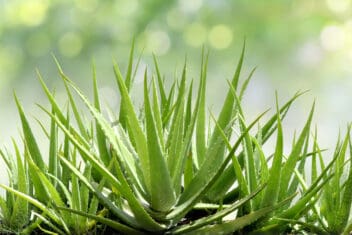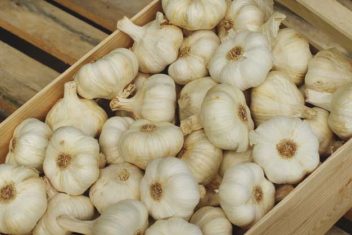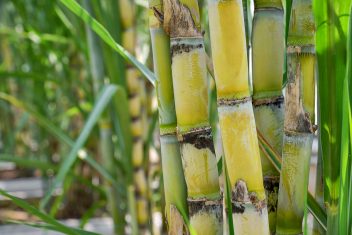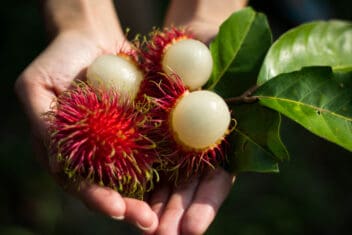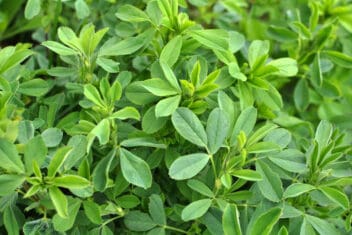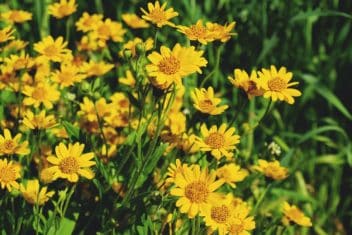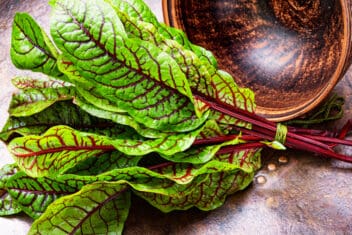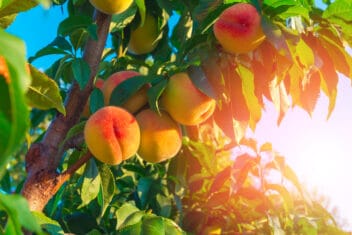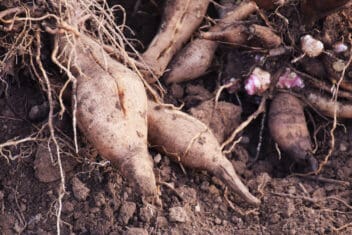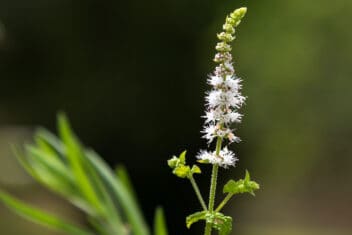Hyssop may be the most underrated herb in the garden. Growing hyssop gives your medicine shelf and meal routine a boost. As if that weren’t enough, the hardy herb enhances your flower beds with its delicate pink, blue, white, and yellow flowers that are irresistible to pollinators.
The flowers arrive in late summer and fall, which gives a nice balance to other herbs and flowers that bloom in the spring and summer. In the winter, some varieties of the plant add color to the garden with its semi-evergreen leaves.
Hyssop is in the mint family and has a minty, somewhat astringent odor. It’s used as a culinary and medicinal herb, as well as a companion plant that helps deter pests.
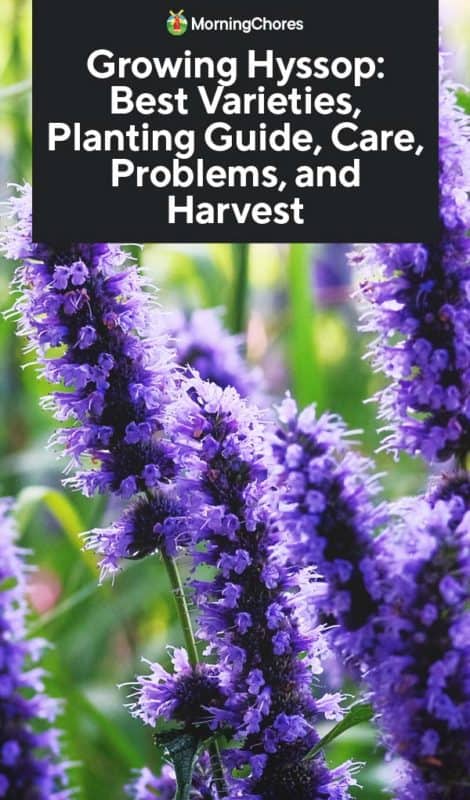
Hyssop Varieties
Choosing hyssop can be confusing. There are several plants that are referred to as hyssop. However, they come from two different genera: Hyssopnus and Agastache. They’re both are part of the mint family and look similar.
Both types of hyssop are perennials and have evergreen foliage with clusters of tiny flowers. The flowers grow at the top of tall spikes and have a pungent scent. Both have similar growing habits.
Common Hyssop (Hyssopus officinalis)
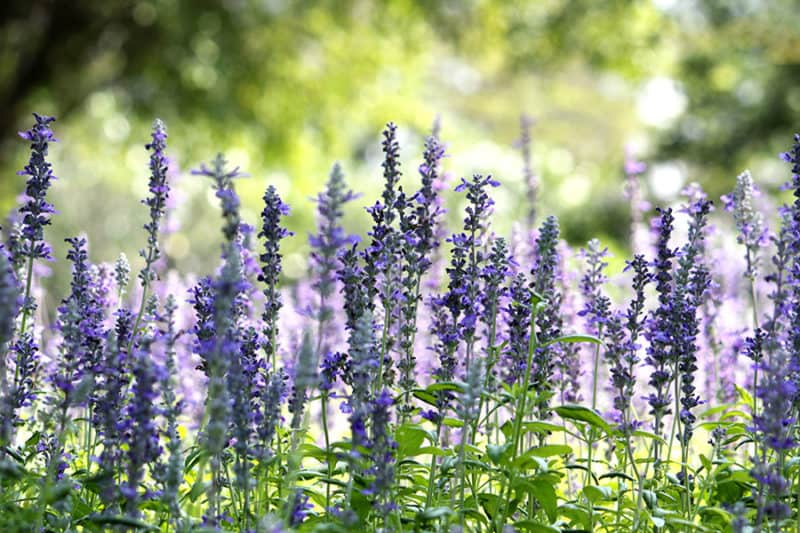
This is the main generic variety known as common hyssop. It’s a perennial and reseeds readily. This type takes 85 days for the plants to flower with bright blue-violet flowers. Some varieties may also have pink or white blossoms.
It features small clusters of flowers on narrow, spiky stems. This type grows well in U.S. Department of Agriculture plant hardiness zones 3 through 10.
Anise Hyssop (Agastache foeniculum)
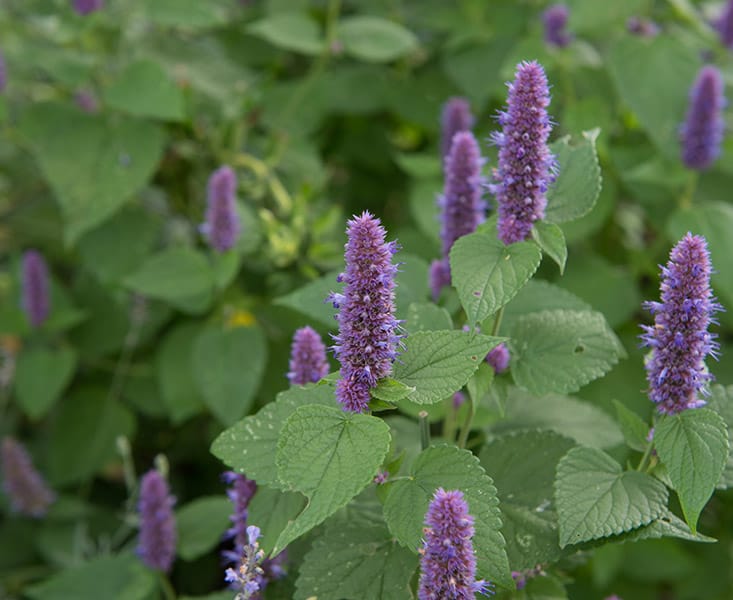
Anise hyssop is not a true hyssop. It’s a member of the mint family and has similar qualities. The flowers are edible and used to give flavor and color to drinks, soups, salads, and desserts. The leaves have a sweet, licorice-mint flavor and can be used as a substitute for anise seed in cooking.
Not as hardy as true hyssop, it’s considered a tender perennial. The flowers are popular for dried flower arrangements and resemble lavender. It tolerates shade more than other hyssops. This hyssop variety isn’t found growing as widespread in the U.S. and grows well in USDA zones 6 to 10.
Rock Hyssop (Hyssopnus officianlis s. arisatus)
Rock hyssop is a cultivar of common hyssop. The big difference is that its much lower-growing. It’s popular as a landscape specimen and looks beautiful in rock gardens and along the edges of pathways. It pairs nicely with creeping thyme. Rock hyssop does well in USDA zones 3 through 9.
Yellow Giant Hyssop (Agastache nepetoides)
Yellow giant hyssop is a scentless variety that is tall and produces yellow flower spikes that are mulch bulkier than common or anise hyssops. This cultivar is mentioned in the video below and has done well in trials. It grows in USDA zones 2 to 8.
Korean Hyssop (Agastache rugosa)
Korean hyssop, sometimes referred to as Korean mint, is similar to anise hyssop. It’s a tall cultivar and gets up to five feet in height. It’s also slightly hardier than anise hyssop. It does well in southern states and in USDA zones 5 to 10.
Mexican or Southwestern Hyssop (Agastache mexicana)
Mexican hyssop is an excellent variety for attracting pollinators. It’s sometimes referred to as Mexican giant hyssop because it grows over three feet tall. This variety is native to Mexico and the southwestern United States and likes dry sandy soil. It doesn’t do as well in northern zones because it prefers warm areas. Grows in zones 6 through 9.
Planting Hyssop
While native to Europe and Asia, hyssop has naturalized throughout Canada and the United States, which means it’s well-suited to growing in most gardens.
Sun Requirements
You’ll have the best success growing hyssop in full sun, but it will also do well in partial shade.
Soil Requirements
Hyssop needs well-drained soil with lots of well-rotted compost. If you have clay soil, add some sand to loosen up it up. Hyssop does well in rocky soil as long as there is adequate drainage.
Hyssop grows in a wide range of pH levels but seems to prefer 6.5 – 7.0.
Start Indoors
Starting indoors works best because hyssop has a long germination period of two to four weeks. Sow eight weeks before your last frost date and be patient as it matures.
Sow seeds in pots at least three inches deep. Plant your seeds one-fourth inch deep just beneath the surface of the soil.
Transplant seedlings once the nights have gotten above freezing and after the threat of frost has passed. Space your seedlings between 6-12 inches apart.
Direct Seed
Sow seeds outdoors after the danger of frost has passed. Plant one seed per inch in rows eighteen inches apart. Mark where you have planted them since they have a long germination time. You can also put seeds in the ground in late fall for spring germination.
Cuttings
If you have a friend that is willing to share you can also grow hyssop from cuttings. During late spring or early fall take a six-inch stem cutting.
After you strip off the lower leaves place the stem in moist sand. Occasionally mist the plant. The sand should be slightly damp but not wet. Roots take about one month to grow.
Containers
Hyssop does well in containers and will be happy to spend the winter in a cool room indoors. If you’re growing hyssop in a container, be sure it’s at least ten inches deep to accommodate their long taproot. Inside, it wants to be in a sunny south-facing window or under grow lights.
It also does well in hydroponic gardens.
Caring for Hyssop
Fertilizing
Growing hyssop doesn’t require fertilizer. You can work in some well-rotted compost to the soil when you plant if you want to give plants a boost.
Pruning

Hyssop has a height of 24-36 inches and spreads quickly, so keep it pruned back if it gets too crowded. Make sure it has plenty of space and good air circulation.
Watering
Native to cool, high elevations, hyssop tolerates drought conditions well. Care should be taken not to overwater. Allow the soil to completely dry out between watering.
Problems and Solutions to Growing Hyssop
Hyssop is resistant to pests and diseases. In fact, many people grow it as a companion plant to help repel cabbage months and flea beetles. The few diseases that attack hyssop are all related to the plant growing in conditions that are too moist.
Root Rot
Root rot, as the name implies, is a disease that causes roots of growing hyssop plants to rot. You might notice yellow leaves or stunted growth, but the only way to be sure you have the disease is to check the roots. They’ll look soft and mushy.
If some of the roots are still alive, trim away the dead stuff and replant in well-draining soil. If all of the roots are compromised, your plant is toast. Dig it up, improve the drainage in your soil, and plant new plants.
Rust
Rust causes reddish pustules that burst and release powdery spores on plant leaves. If you spot it, spray plants with a copper or sulfur-based spray.
Powdery Mildew
Powdery mildew makes it look like your plants have been dusted with flour. Check out our guide for dealing with it.
Companion Plants for Hyssop
Hyssop has a wonderful reputation as a companion plant. Not only does it attract beneficial insects, but it also repels some pests.
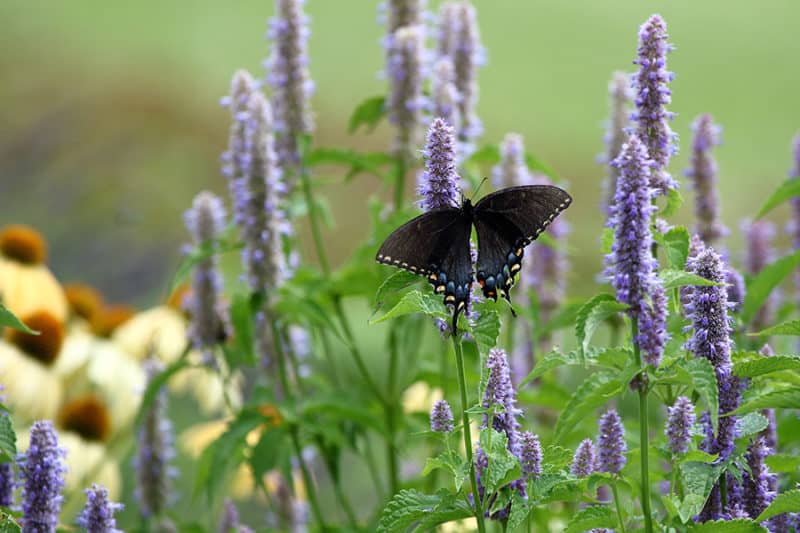
Plant it with brassicas to repel cabbage worms and flea beetles. Anise hyssop is supposed to have particularly excellent repellent qualities. It also grows well with grapes.
This video talks about how useful hyssop is as a plant for pollinators and talks about a couple of the different varieties.
Harvesting and Storing
You can start harvesting the young leaves when hyssop is ten inches or so tall and before flowering occurs.
If you are harvesting leaves for cooking, pick a few individual leaves as you need them. Keep in mind, the leaves are strong and you don’t want to overpower other flavors. Hyssop combines well with sweeter herbs such as lemon balm.
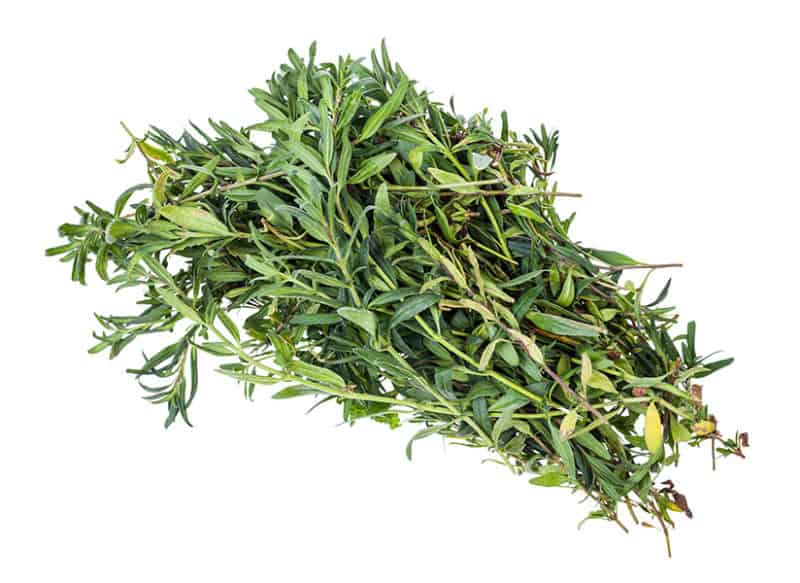
Chop up the fresh leaves for salads, rice dishes, soups, teas, liqueurs, and stews. The oil is heavenly in perfumes.
If you’re harvesting the leaves to dry for winter use or in medicines, then pick several sprigs at a time. You can harvest hyssop several times a season. Cut the stems in the morning after the dew has dried.
Dry hyssop by hanging upside down in a cool place with good air circulation. When they feel crunchy, you can remove the leaves from the stem and store them in an airtight container. Mason jars work well.
You can also use a food-grade dehydrator. Place the leaves so they are not touching. Set the temperature on the lowest setting for several hours.
The flowers are edible and have medicinal qualities as well.
Health Benefits
Hyssop (Hyssopus officinalis) is an ancient healing herb. It’s mentioned in the bible 11 times, typically as a cleanser or for purification rituals. The name in Hebrew is “Esab” which means holy herb.
Hyssop was often scattered on the floor of sick rooms. In Puritan England, it was hung on doors to keep away witches.
Today, hyssop is recognized for potentially having many health benefits. It’s used to soothe indigestion and gas as well as problems with the liver and gall bladder, and to ease menstrual cramps. In addition, it helps with respiratory problems, especially thick mucus congestion, sore throats, and coughs.
Hyssop should not be used by pregnant or nursing women or young children. Also, if you have a history of having seizures, you shouldn’t use hyssop.
Medicinal Uses
Tea made from hyssop flowers and or leaves is a popular home remedy. If you plan to use your hyssop leaves for tea, leave them whole, do not crush them.
For brewing tea, use one tablespoon of dried hyssop or three tablespoons of the fresh herb.
Combine hyssop with elderberry for a cough remedy. Hyssop, lemon balm and ginger can be used for indigestion. Make a poultice from anise hyssop for treating burns. It’s also soothing on poison ivy rashes.
Hyssop works well in an oxymel. An oxymel is a medicine that is made from herbs, raw honey, and vinegar. This video walks you through making one.
The Bottom Line
Not enough people are growing hyssop – if gardeners realized how useful it is in the garden, medicine cabinet, and kitchen, I think everyone would have it.
Now that you know how amazing hyssop is, get growing! Then, let us know what your favorite use for this wonder herb is.

